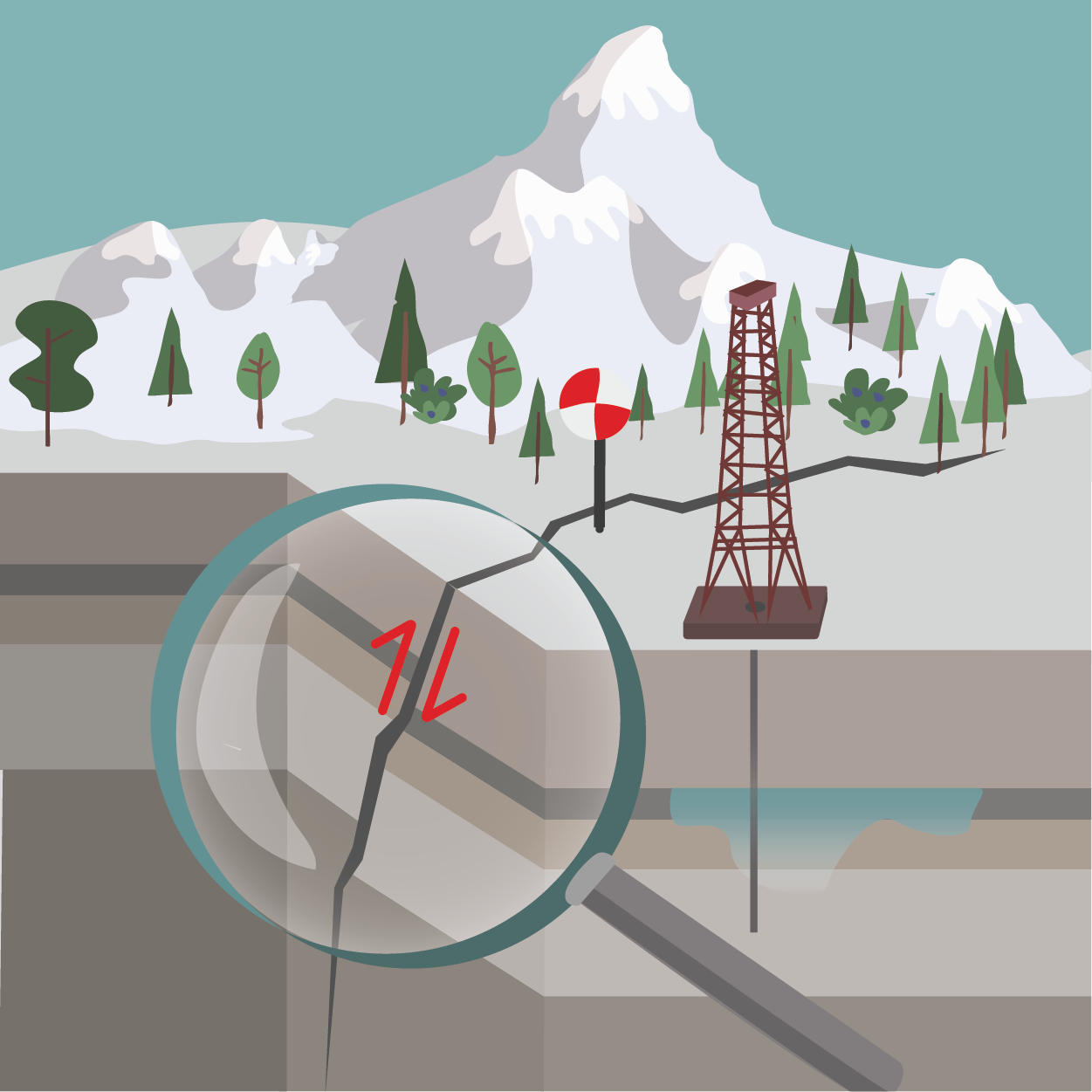The earthquake processes section focuses on understanding, describing, and modelling earthquake processes and wave propagation in various contexts. The knowledge gained is translated into societally relevant applications and services for risk mitigation or seismic imaging. This section spans a wide range of temporal scales and topics, from small-scale laboratory experiments to large-scale natural earthquakes, considering induced as well as natural seismicity and aseismic deformation processes. They investigate fundamental topics linked to the statistics and physics of earthquake sources and wave scattering in the crust, using statistical methods, numerical simulations and direct observations.

Applied research topics focus on improving high-resolution seismic imaging and monitoring methods. On the regional scale, the section investigates volcanoes, subduction zones, glaciers and the effect of climate change on groundwater levels. On the local scale, it tailors the methods to underground geo-engineering projects, such as deep geothermal energy, CO2 storage, and nuclear waste disposal. Another focus is on researching earthquake forecasting and predictability, aiming to develop and test operational earthquake forecasting capabilities.
The section collaborates with Swiss underground laboratories such as the BedrettoLab, the Mont Terri Rock Laboratory, or the Grimsel Underground Rock Laboratory. In addition to research, the section plays a key role in teaching, with several members engaged in fundamental courses at ETH Zurich and other institutions.
The earthquake processes section is co-led by Dr. Anne Obermann and Dr. Antonio P. Rinaldi. It is divided into five research groups.
Led by Dr. Leila Mizrahi, the statistical seismology group develops and applies advanced time-dependent earthquake forecasting models and statistically rigorous methods for analysing earthquake occurrence patterns. While earthquakes remain unpredictable, society relies on statistical approaches to estimate probabilities of future earthquakes. The group’s core mission is to create and test harmonised earthquake forecasting models for Switzerland and Europe, using Epidemic-Type Aftershock Sequence (ETAS) models. Their work also advances the understanding of earthquake processes by developing data analysis methods and open-source tools. The group actively challenges the scientific status quo by exploring machine-learning techniques and leveraging high-performance computing, contributing to advancements in earthquake predictability.
Led by Dr. Federica Lanza and Dr. Ryan Schultz, this group focuses on seismic sequences induced by anthropogenic activities. Their main interest lies in advancing cost-effective monitoring, understanding the physics of fault reactivation, appraising geologically susceptible conditions, modelling as well as forecasting earthquakes, and identifying induced cases. Their research also focuses on hazard and risk quantification approaches which contributes to developing (adaptive) traffic light protocols and risk mitigation strategies to manage induced seismicity. The group further conducts research novel research into human perceptions of earthquake risks. Furthermore, their findings help shape practical frameworks and good-practice guidelines for safer and responsible resource development.
Dr. Anne Obermann leads this group which uses seismic interferometry to image and monitor complex subsurface structures at high resolution, relying on passive seismic data recordings. Seismic interferometry refers to the principle of reconstructing seismic responses associated with virtual sources by cross-correlating seismic wavefield records obtained at different receiver locations. By applying and integrating technological advances (e.g. Distributed Acoustic Sensing, dense seismic arrays), the group can track subtle changes in the Earth's structure that were previously undetectable. The group’s research applies to various contexts, including magma chambers, fault zones, groundwater and geothermal reservoirs, and CO2 storage sites.
This group, led by Dr. Paul Selvadurai, is a partner in the D-EAPS Rock Physics and Mechanics Laboratory (RPMLab). It is at the forefront of the laboratory study of earthquake mechanics and rock physics. The group develops advanced tools to observe and visualise fracture processes as well as the initiation, propagation, and arrest of earthquakes. These tools help to clarify patterns, enabling systematic testing to isolate key features of the failure process that are most crucial and need to be considered. Understanding the fundamental processes that affect earthquake initiation, propagation, and arrest is essential to producing more accurate physics-based models, which can improve forecasting and minimize hazard and risk. The group’s work is closely linked to earthquake mechanics research in fields like geothermal energy and carbon sequestration, contributing to the broader understanding of earthquake initiation and propagation.
Led by Dr. Antonio P. Rinaldi, this group develops numerical models that link Thermo-Hydro-Mechanical-Chemical processes. The group’s expertise is essential for understanding natural processes related to earthquakes, as well as for developing forecasting models for induced seismicity. Their work supports experiments in underground laboratories such as the BedrettoLab and Mont Terri Rock Laboratory and the development of forecasting models for induced seismicity. It further consolidates knowledge linked to nuclear waste disposal, geothermal projects, CO2 storage, as well as to the development of physics-based approaches linked to machine learning.